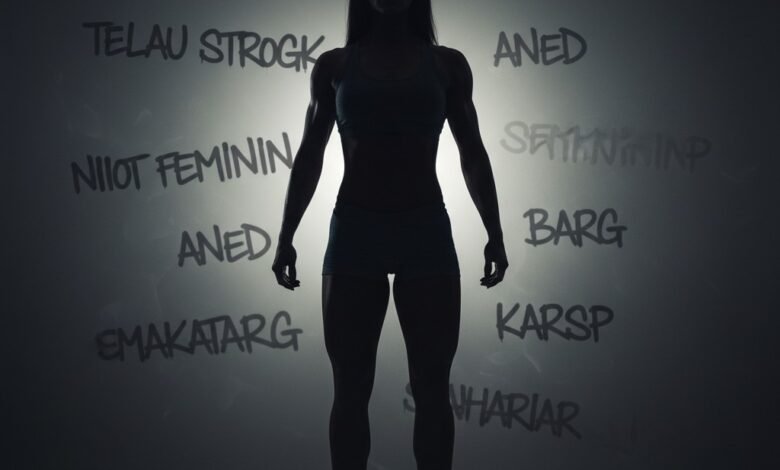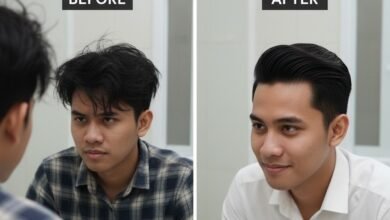Serena Williams: When Strength Becomes Beauty
Kisah tentang seorang juara yang mengajarkan dunia bahwa tubuh yang kuat adalah tubuh yang indah

Imagine this: You’re nine years old, standing on a cracked tennis court in Compton, Los Angeles. In your hands, a racket almost as big as your body. Around you, the harsh sounds of the streets, far from the glamour of elite tennis clubs. But in your eyes, there’s a different sparkle. There’s a dream so big, the world wasn’t ready for it.
That’s Serena Williams. And this story isn’t just about how she became one of the greatest athletes of all time. It’s about the journey of a woman who redefined beauty, one swing of the racket at a time.
The Body That Was “Too Much”
Serena was never asked to apologize for her body. But the world kept asking her to.
“Too muscular,” they said.
“Too strong,” others whispered.
“Not feminine,” the media wrote.
In a tennis world dominated by slender silhouettes and delicate arms, Serena arrived with strong shoulders, muscular arms, and powerful legs—a body built not for posing, but for winning. And that was precisely the problem. She didn’t fit into the mold the world had prepared for women.
In 2015, a writer even called Serena one of the most “unattractive” athletes in sports. The comment went viral, sparking outrage, but also reopening old wounds Serena had felt since her teenage years. She once recounted how she was compared to other female tennis players who were more “slender” and “graceful.” As if a female athlete’s worth was measured not only by her achievements but also by how “beautiful” she was in the eyes of the audience.
But Serena chose a different path. She didn’t get rid of her muscles. She didn’t stop training hard. Instead, she strengthened herself even more—physically and mentally.
The Moment That Changed Everything
There was one moment that made Serena truly understand the power of her body. Not when she won her first Grand Slam. Not when she became a Wimbledon champion. But when she was pregnant.
In 2017, Serena won the Australian Open—a Grand Slam tournament—while eight weeks pregnant. She defeated her sister, Venus Williams, in the final, with a belly that was already starting to show. She didn’t know then that she was pregnant. But her body knew. Her body was working double duty: fighting for a championship title and building new life within it.
After giving birth to her daughter, Olympia, Serena experienced serious complications. Pulmonary embolism, blood clots, emergency surgery. She almost died. And during that recovery period, she learned something much deeper about her body: that this body was not just a tool for winning, but also a home for life, for struggle, for miracles.
“This body has given me everything,” she said in an interview. “It gave me victories, it gave me a child, and even in its weakest moments, it kept fighting for life.”
That was the turning point. Serena no longer saw her body as something to be defended or changed. She saw it as a partner, as the best friend who had accompanied her through every victory and defeat.
Rewriting the Narrative
Serena began to speak more openly about body image. She didn’t just post glamorous photos on Instagram, but also photos of herself training, sweating, with prominent muscles. She started writing essays, speaking at various forums, and most importantly: she began to use her voice to advocate for other women.
“We live in a world that tells women to be small,” she wrote in a viral essay. “Small in physicality, small in ambition, small in voice. But why? Why should we apologize for taking up space?”
She spoke about how Black women, in particular, have always been held to different standards. That her body was not only criticized for being muscular but also for her skin color. That she had to work twice as hard to receive half the recognition received by white athletes.
And she was not alone in this struggle. Many women, especially those who work in gyms, on fields, in dance studios, began to share their stories. How they were criticized for being “too muscular,” “too big,” “not feminine.” And how Serena’s words gave them permission to be proud of their strength.
Lessons from the Champion
Today, in her 40s, Serena has retired from professional tennis. But her legacy far surpasses trophies and titles. She has changed the conversation about women’s bodies.
She taught us that:
- Strength is beauty. Not in a metaphorical sense, but literally. Muscles, sweat, physical power—all of it is beautiful because it’s proof of what our bodies can do.
- The body is not for looking at, but for feeling. The focus is not on how the body looks in a mirror or in a photo, but on what it can do. Running, jumping, lifting, giving birth, healing.
- No one has the right to comment on your body except you. Serena once said, “I’ve never asked anyone for their opinion on my body. And I’m not going to start now.”
Starting Your Journey
Maybe you’re not an athlete. Maybe you’ve never held a tennis racket in your life. But Serena’s lesson remains the same: your body is a miracle, just as it is.
Start by changing the way you talk to yourself. Instead of saying, “I don’t like my stomach,” try asking: “What has my stomach done for me today?” Maybe it helped you laugh freely. Maybe it holds memories of your favorite food. Maybe, like Serena, it has been or will be home to new life.
Celebrate what your body can do, not just how it looks. Does it carry you up stairs without getting winded? Does it give you the strength to hug your loved ones? Does it heal after an illness?
Those are all victories. That is all beauty.
Serena Williams didn’t change her body for the world. She changed the world for her body. And in the process, she gave us all permission to do the same.
So, today, when you look in the mirror, don’t ask, “Am I beautiful enough?” Ask, “Am I appreciating the miracle I’m looking at?”
Because, Beauty Bestie, the answer is always, always yes.
Share your story with us in the comments section. When was the last time you celebrated your body’s strength? We’d love to hear your story.



